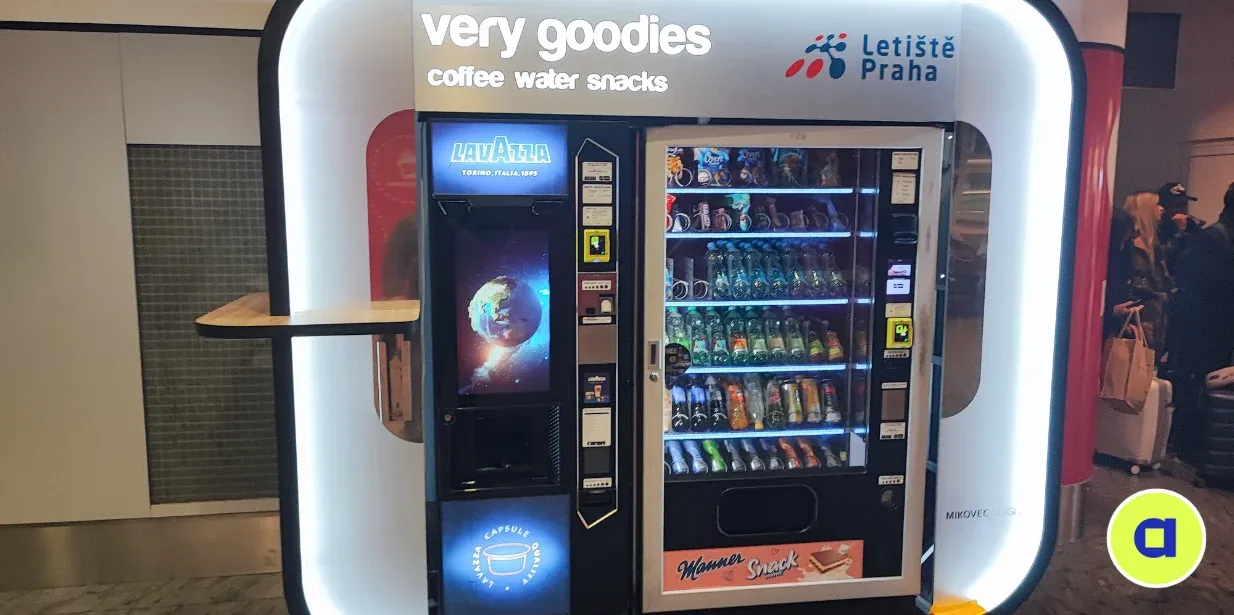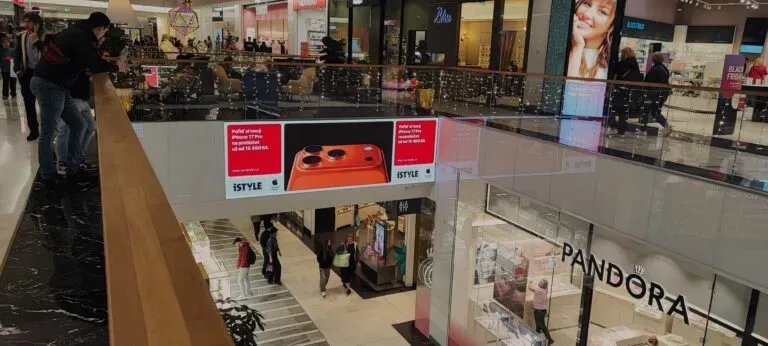DOOH: 5 tips on how to integrate AI into programmatic digital outdoor advertising
DOOH: New marketing strategies include Artificial Intelligence, because it is precisely what allows companies to more accurately adjust communication with clients.
This is especially relevant for the DOOH network, where speed of reaction, dynamism of content, and the possibility of instant analysis of audience behavior play a key role. The combination of analytics, big data, and adaptive algorithms opens new horizons for businesses that work with digital advertising screens and LED billboards.
Companies are actively implementing artificial intelligence into outdoor marketing strategies, since advertising automation makes it possible to reduce operational process costs and at the same time increase display accuracy. AI analyzes location, traffic, and people’s behavior in a specific area and recommends which format, style, or message will be most relevant for the current moment.
Thanks to this, DOOH advertising networks are moving from static solutions to completely flexible systems with personalized scenarios for content demonstration.
Why use AI in digital advertising?
Traditional outdoor advertising is limited by the fact that it is static and unable to adapt to changes in context. Advertising campaigns are often planned in advance without taking into account momentary fluctuations of the audience or external conditions.
Artificial Intelligence solves this problem because it is capable of processing large volumes of data and making adjustments in real time. As a result, the content on advertising screens changes automatically depending on the weather, city events, time of day, or the behavior of people nearby.
AI also helps brands build more meaningful interactions with consumers. For example, LED billboards can display different versions of messages depending on the type of traffic — pedestrian or automobile. During peak hours, advertisers are interested in some demonstration scenarios, while at night — completely different ones. Thanks to the possibilities of advertising automation, such changes no longer require manual intervention.
Evolution of content formats under the influence of AI
Modern approaches to visual communication are rapidly changing, and one of the key drivers of this transformation is Artificial Intelligence. If earlier marketers worked with a limited number of templates, today algorithms make it possible to create complex animation scenes, multi-layered graphic compositions, and adaptive plots that automatically adjust to the context of the location or audience behavior. Such a dynamic approach allows brands to stand out among competitors and attract attention even in an overloaded urban environment.
Within the DOOH network, intelligent systems open the possibility of using content as a living tool of interaction, and not merely as a visual carrier. For example, advertising screens can display variable graphical patterns that react to the movement speed of people or traffic flow. This makes it possible to create unique visual effects that arise in real time and make interaction with advertising more engaging and natural.
Another direction of development is the emergence of AI-generative styles that use algorithms to create new forms and compositions. Brands can experiment with the atmosphere of the content — making it minimalist, emotional, energetic, or maximally futuristic. Artificial Intelligence ensures rapid change of artistic solutions, so campaigns become much more diverse and flexible, and DOOH networks — more sensitive to creative trends.
Such an approach changes the very nature of outdoor creativity: advertising screens cease to be just carriers and turn into interactive surfaces where digital creativity develops in new directions unavailable in traditional formats.
Application of AI in modern DOOH advertising
The integration of artificial intelligence in DOOH advertising opens for business much broader opportunities than traditional approaches to visual communication. Thanks to analysis of audience behavior and interests, the system can display content that better resonates with specific viewers. This makes interaction with the consumer more natural and at the same time increases the effectiveness of advertising scenarios in real time.
One of the key advantages of AI is the ability to respond to external factors. Algorithms can automatically change the content of ads according to weather conditions, the intensity of human flow, or even time of day. For brands, this means the ability to maintain message relevance without constant manual work, which significantly increases the flexibility of the entire display system.
Another important aspect is the development of analytics. AI not only tracks audience behavior but also offers optimal content options, analyzes results, and builds forecasts. Thus, advertising campaigns become more accurate, and budgets are spent more rationally. In combination with modern tools such as pDOOH, data turn into practical recommendations for marketers.
5 tips on how AI is applied in Programmatic DOOH
1. Intelligent control of displays in real time
Artificial intelligence algorithms make media-buying models through pDOOH more flexible and “alive.” The system analyzes time intervals, traffic intensity, type of location, and other parameters and automatically chooses which specific content to show at a particular moment.
Thanks to this, advertising campaigns stop being static grids and turn into constantly updated scenarios. Within pDOOH, the platform can adjust display frequency, order of creatives, and duration of videos so as to make maximum use of each impression without unnecessary budget spending.
2. Coordinated operation of a large digital infrastructure
Another important direction of AI application is automatic management of technically complex installations. When many displays are placed at one location, the video wall software helps to combine them into a single logical composition. Algorithms ensure that the image on the screens remains clear, synchronized, and consistent with the creative concept.
At the level of individual media, display stability is ensured by the digital signage player, which receives updated content from the system and outputs it to the displays without delay. As a result, AI not only decides what to show but also guarantees that the entire digital infrastructure operates harmoniously.
3. Context-oriented ad display
AI makes it possible to turn Programmatic DOOH into a system that sensitively perceives the context around the screen. Algorithms take into account weather, time of day, street congestion, the mood of the location, and other variables to automatically select the most appropriate message. On a cool morning, the system may prefer cozy, “warm” plots; on a hot day — lighter, more dynamic scenarios. Thanks to this, advertising ceases to be abstract and begins to respond to the real conditions in which the audience finds itself.
The contextual approach is especially effective when AI is combined with inventory-buying tools such as SSP and DSP for DOOH. In such a model, the Supply-Side Platform helps find optimal windows for display, and algorithms predict at what moment the content will receive the greatest response. As a result, each display becomes part of a thoughtful scenario: the system does not simply show videos according to the schedule but ensures that every appeal to the audience is relevant precisely here and precisely now.
4. Dynamic and non-standard ad formats
Another important direction is the complete transformation of advertising formats under the influence of AI. Instead of uniform videos, networks gain the ability to use animation, complex graphics, smooth transitions between scenes, and scenarios that change together with the behavior of people near the screens.
Artificial Intelligence analyzes how the audience reacts to different visual solutions and gradually selects those styles that attract attention better than others. Thus, creatives are created that do not look random — they have logic, rhythm, and their own character.
Technically, such formats are implemented with the help of specialized Display Solutions platforms that combine tools for working with video, graphics, and data. Software for LED screens also plays an important role here: it is responsible for correct brightness, contrast, synchronization of animations, and reproduction of fine details. As a result, AI not only invents new variants of visual content but also helps to reproduce them on large screens without losing quality or dynamics.
5. Combining online data with offline displays
AI makes it possible to combine data from online channels and offline environments into a single decision-making system. Information from a website, mobile applications, CRM, or advertising cabinets can be used to set up Programmatic DOOH scenarios: the system understands which products previously interested the user, which promotions they saw online, and which offers may be most relevant for them. This allows building integrated campaigns where digital screens continue online communication rather than exist separately from it.
At the technical level, both display platforms and separate devices responsible for content playback work with this. It is important that the digital signage player steadily receives updated data, correctly synchronizes them with the display schedule, and does not create delays in rendering.
Combined with the software logic of Programmatic DOOH, this allows building a seamless chain: the user sees relevant messages online and then receives a continuation of this communication on outdoor screens in places where real purchasing decisions are made.
Problems and difficulties of AI integration
– High implementation cost. Modernization of equipment, infrastructure updates, and adaptation of software for DOOH require significant investments. For some operators, this becomes the main barrier that slows down the transition to artificial intelligence technologies.
– Ethical and legal issues. In the field of Digital Out Of Home, discussions often arise about privacy, data collection, and the permissible boundary of personalization. Companies are forced to comply with strict regulations and work very carefully with the collection of user information.
– Risks of inaccuracies. Algorithms sometimes make mistakes in determining context or audience characteristics, which can lead to incorrect system reactions or inappropriate storylines in video advertising.
– Need for constant optimization. For AI to work stably, it must be regularly updated, tested, and adapted to real conditions. Without this, the effectiveness of the technology quickly decreases.
– Difficulty of integration with existing infrastructure. Many advertising operators have outdated management systems and hardware solutions that are not always compatible with modern AI platforms. Because of this, the implementation process requires additional technical resources and careful modernization planning.
Undoubtedly, the introduction of artificial intelligence into DOOH opens a new stage of development for the advertising industry. Companies that are already mastering these technologies gain the ability to build more accurate and timely communication with the audience, offering content that corresponds to real interests and behavioral models of people. As a result, AI is gradually changing the usual approaches to outdoor advertising, making it more modern, effective, and noticeably more result-oriented.
Advision is a content management system for remote control, media planning of video and audio content broadcasting, and a supply-side platform for monetising advertising time. We also implement a Wi-Fi tracking system to measure quantitative indicators of the advertising audience.
We help Digital Signage owners and DOOH advertising operators earn money from advertising, automate work processes, and build a reliable media infrastructure using AdTech and MarTech software solutions.
Contact us if you want to increase your profits and implement the latest technologies to solve your problems!
Share the news




















